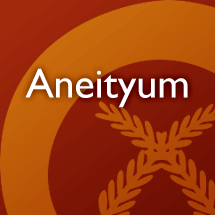Your search for * in hygiene has returned 11 entries
intop pa
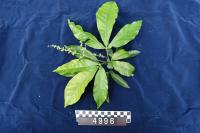
n. shrub to 2 m tall, dbh 2 cm (collection: Michael J. Balick #4996)
Example: This is an ornamental plant, grown around the home. People crush the leaves to enjoy the fragrance released. When bathing, grate coconut meat and crush the leaves of this plant and rub all over the body, before bathing and afterwards your body will smell very nice. To repel mosquitoes, crush these leaves and put them in the house.
bookmarkinyiriñwei
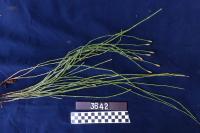
n. herb, growing along the river at the edge of secondary forest. Stems pale green. (collection: Gregory M. Plunkett #3642)
Example: As a local toothbrush, take two pieces of stems, bend them and use to brush teeth with water. This plant acts like sandpaper to clean the teeth. Can also be used to brush pots.
bookmarkmasoa
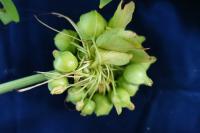
n. herb to 1 m, fruits green (collection: Michael J. Balick #4915)
Example: This plant was said to have been brought in by the early missionaries, used to starch their clothes and grown as a crop for export to England. Used as a food crop as well, the root is mashed, dried in the sun and kept until needed. To process, put the roots in a bowl, add water and soak for 1 day and night, pour off the water and keep the starch. Prepare this food like lap-lap that is cooked on a fire in a pan.
bookmarknaerek
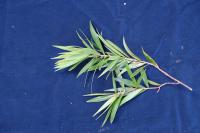
n. shrub, 2 m tall (collection: Gregory M. Plunkett #3492)
Example: 1. Used for firewood. Whole plant used to make a broom for sweeping by tying the small branches together. The very topmost leaves are used when planting kava, as a “superstition” you hold a lead between your big and second toes when tamping the earth down for a kava plant, to give power to earth so kava grows well. 2. This plant is used to make a local broom. Collect a number of branches, let them dry in the sun--the leaves will fall off--then tie the branches together with a piece of Pandanus leaf or any other vine that is handy.
bookmarknahod
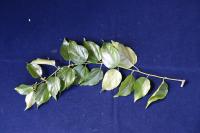
nairek
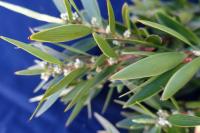
nednaiñ lelcei
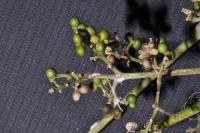
nemered
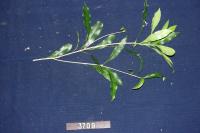
nop̃ou
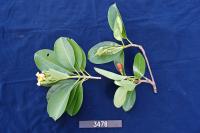
n. large epiphyte on dead tree, growing in open forest. (collection: Gregory M. Plunkett #3478)
Example: The wood of this plant is very hard and can be used for house posts. Because the wood is somewhat heavy, younger stems can be sharpened at one end and the pole can be used to plant dryland taro, to make holes for the tubers. For planting swamp taro, the leaves can be used to line the pit that the taro is planted in; it is a local fertilizer for the taro, and as it rots the soil becomes soft while the taro is growing. The flowers are placed behind one’s ear to enjoy the fragrance or can also be used to make a floral necklace (Intañ).
bookmarknopou
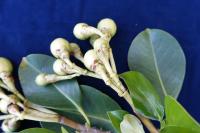
n. tree to 5 m, dbh 10 cm (collection: Michael J. Balick #4881)
Example: The wood of this tree is used to make house-posts, it is strong. The leaves are used as a compost for the taro patch; line the hole with the leaves of this tree, then place soil over that and plant the taro. When the fruits are ripe, local people say that the hermit crabs are "fat" and ready to collect and eat. When a person is in the forest and there is no coconut fruit fiber to start a fire with, use a dry stick, shave it and use a match to start a pile of this tinder to make a good fire. The wood is said to be "oily." This gives it a nice aroma. To perfume coconut oil, drop the dry flowers in it--use 1 handful of dried flowers added to a pot of oil boiling on the fire while making it. Strain out flowers and the oil smells good. Flowers can also be added to the oil once it is bottled to perfume it.
bookmarknop̃ou
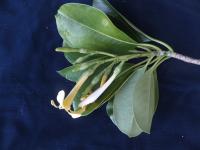
n. tree. Found in the village, usually grows in the hills. (collection: Ashley A McGuigan #16)
Example: 1. Lot of oil in the heartwood so it is good to start a fire, split it into small strips and you can light it for a fire. 2. Calendar plant – when the fruits ripen people know that this is the best season to eat the big hermit crab – meaning that they are fat.
bookmark